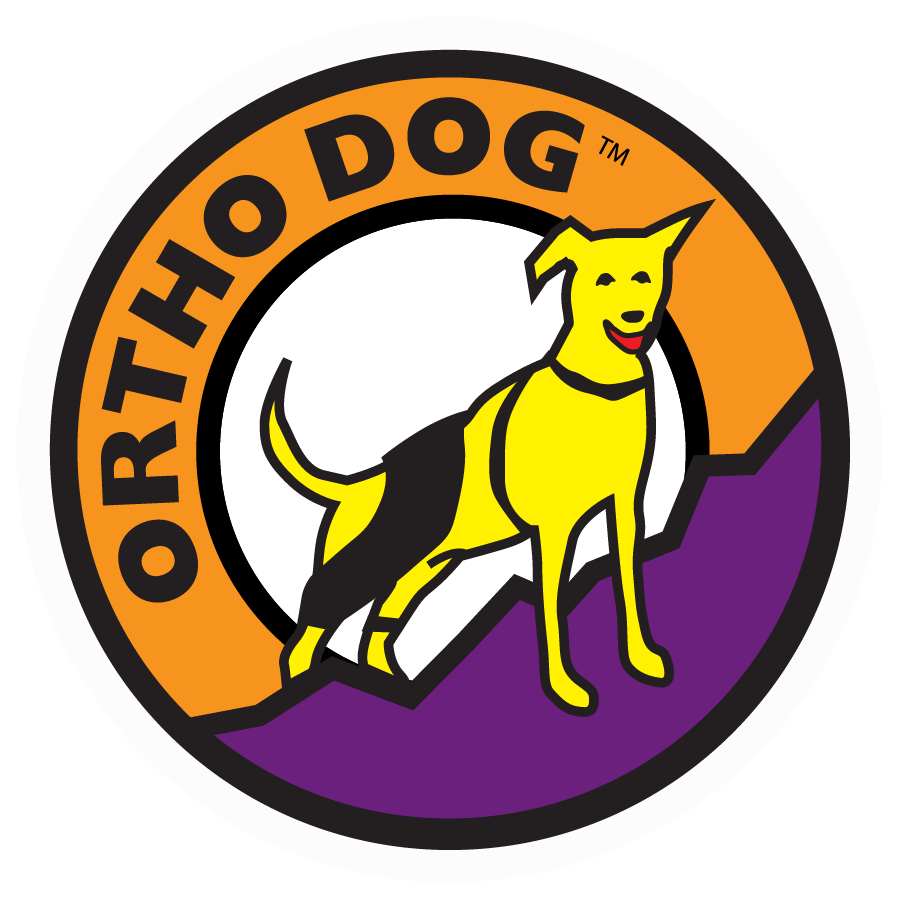An Interview with Canine Rehabilitation Specialist Megan Day
At Ortho Dog, we often seek out the expertise of veterinarians and dog health experts to assist in the evolution of our orthopedic braces, as well as learn new and complementary techniques to accomplish our primary mission: improved mobility for active and happy dogs.
We’re excited to share our recent interview with Canine Rehabilitation Practitioner Megan Day to learn more about physical therapy for dogs. Megan is the founder of WagHab, an aquatic and exercise gym for dogs in Asheville North Carolina.

What is dog physical therapy?
The term “physical therapy” is owned by the PT board and only pertains to humans, so we use canine “physical rehabilitation” instead of “physical therapy”.
There are two professions that can become certified in canine physical rehabilitation: A veterinarian or a physical therapist.
When people think of physical rehab, they often think of post orthopedic surgery or rehabilitation following significant injuries such as broken bones or torn muscles. We do treat those conditions in canine physical rehabilitation, but we also help dogs with many other conditions, such as arthritis, general deconditioning due to age or due to other physical problems and diseases, weight loss, and balance problems.
Each problem may be approached differently, but some of the most common treatments we use are:
- water treadmill
- laser therapy
- exercises
- massage/manual therapy

What are some misconceptions about dog physical therapy?
People often think that physical rehab is only for dogs with very obvious problems such as acute injury or after surgery, but in fact, most of what we do is to improve the quality of life for the dogs by helping reduce pain, improve their movements so they can be more active, and also help to avoid surgery.
People may also think that physical rehab will be painful or difficult for the dog, but in fact, it is usually a fun experience and most dogs feel better during and after a session.
What are the most common injuries or conditions you support through physical therapy?
Arthritis
We treat many dogs with arthritis! Rehab can help reduce the need for pain pills and help to keep these dogs moving.
Arthritis improves with certain types of low impact exercise (certainly water exercise is included here) and we provide exercise plans specific to the dog’s current age and function.
Hip Dysplasia
We see young dogs with hip dysplasia as well as older dogs. Young dogs often do not yet have the painful arthritis in the hips that occurs from years of laxity (looseness) in the hips. Strengthening exercises for the rear end can be helpful as well as education in maintaining ideal body mass, and lifestyle at home to support and protect the hips. Older dogs with debilitating arthritis from hip dysplasia are helped with low impact exercise, modalities to address pain and increase circulation and mobility.
Torn CCL
We see many, many injured CCLs in dogs. We help some dogs avoid surgery for a torn CCL. There are many grades of injury to the CCL and not all of them need surgery to have a successful outcome. Also, some dogs can’t undergo surgery due to medical conditions and physical rehab can assist with reducing pain and improving function! We also help with dog’s recovery from surgery if they end up needing to go that route.
Physical Rehabilitation and Orthopedic Braces
Can physical therapy be done in conjunction with using a dog mobility brace like Ortho Dog braces?
A brace can help support the area of injury. We approach a brace as an assistant to the full physical rehab program. We would also address strengthening, muscle balance, education for home, pain, etc, just like any other condition we might treat that does not have a brace as an assist.
Braces can be very helpful to the program as they can improve the dog’s confidence and use of the leg that we are trying to treat, as well as help with circulation and pain.
Do you have suggestions you can offer for helping dogs become more accustomed to using orthopedic braces?
Slow introduction is key. Showing the dog the brace and offering reassuring words and treats as needed.
Moving forward only as the dog is comfortable. Make the velcro noises nearby, again with reassurance and treats, before ever applying it to the dog’s leg. Once you have the brace on, only working with short bouts and don’t leave it on unattended until you are sure your dog is comfortable with it. After that, there are exercises that owners can do with their dogs to help with the muscle imbalances and to help improve the use of the limb with the brace.
Are there physical therapy exercises that dog owners can practice at home?
It is best to have a professional evaluate the dog before performing any exercises, as each dog is different and there are so many levels and states of injury, especially for a torn CCL. For hip dysplasia, exercises that focus on improving hip range of motion and strength are the most helpful. These might include having the dog walk backward, repeat sits, and then stand back up from sits, hill climbing, and stair climbing.

Finally – is there anything else specific you would like to share with pet owners seeking support for their pups?
Do your own research when your dog is injured or has an issue and don’t just take one person’s advice if you are uncertain or would like to look for other options. There are many alternative care options out there now in addition to traditional veterinary medicine that can help support your dog and improve their quality of life!
About Megan Day
Megan Day is a physical therapist and Certified Canine Rehabilitation Practitioner (CCRP) and the founder of WagHab. She provides comprehensive physical fitness evaluations and establishes an exercise routine geared toward your dog’s specific needs. She specializes in strengthening the athletic dog and geriatrics.
